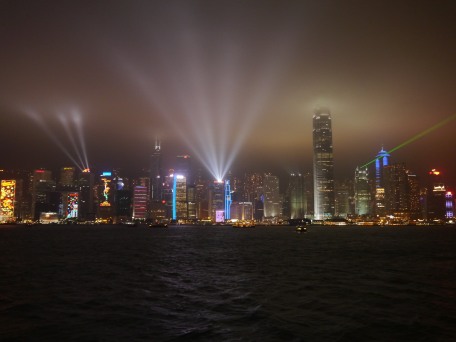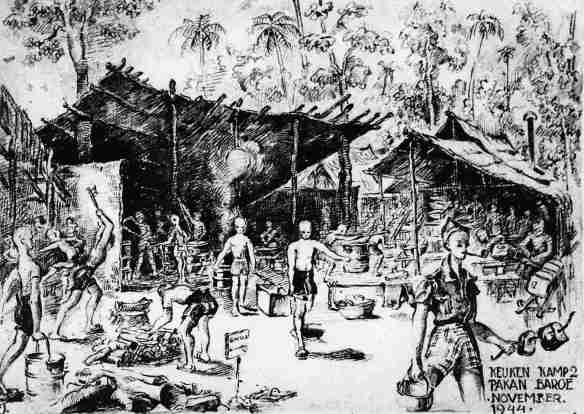My first trip to China some years previous was a complete disaster. I hadn’t done any research and the language barrier made most of the trip impossible. It was only towards the end of my week in Guangzhou that I began to figure out what was what. The trip was a huge headache from the get go and by the time I had learnt the ropes, it was time to leave.
Hopefully this time would be different.
After some delays at the airport we arrived in Hong Kong around 10pm. Our taxi driver “Tsang Chi Wan” didn’t have a clue where the hotel was but luckily managed to find it on his navigational system. I had the pleasure of sitting in the front seat for the duration of the ride. The taxi was rather compact and old looking but it had a Toyota engine, so it was pretty nippy. The journey was tediously long but it was a fascinating sight to behold.
I could have sworn I was back in the UK as all the road markings and signs were exactly the same. As we passed over the ocean to get onto Hong Kong island we drove over what can only be described as the QE2 bridge’s oriental cousin, and had it not been for the unmistakable backdrop, I would have said that we were driving over the river Thames at Dartford, near London.
Once in Hong Kong the landscape changed dramatically. In the darkness I could see thousands of lights coming from the windows of the hundreds of high rise office buildings and city dwellings that housed the seven million inhabitants of the small island. I couldn’t help wonder about all those people, living their lives, going about their nightly business. It was astounding to see such a condensed mass of concrete jungle, I could barely contain my impulsiveness to explore.
We decided not to stray too far from the hotel that first night and sort out a small restaurant specializing in hot pots. There was a black electric hob in the centre of the table. The pot sat in front of us on a gentle roll, as the waitress brought the raw food out on platters for us to add to the broth at out own pace. It was a typical stew made with onions, leeks, carrots and chicken etc. It was accompanied by a Chinese twist of Pak Choi and sour baby green peppercorns that were so pungent they made me feel nausea’s after eating them.
If you love Chinese food, then Kong Kong is the place to be. Over the weekend we sampled other great delights such as crispy goose and wanton soup with beansprouts.
One afternoon we happened upon a very busy restaurant. It was a cosy little place with plastic seats and tables. In the UK I would have referred to it as an “oriental greasy spoon” type of place. Every seat was filled and the staff were rushing about hysterically, whilst the big boss man was barking orders from the kitchen.
We asked for some water, so they brought us 3 plastic cups filled with boiling H20. Assuming this was the norm, at the end of the meal having let it cool, I sat and drank from my luke warm cup, whilst getting some strange looks from the other punters in the restaurant. I saw a woman on another table put her knife and fork in her water to sterilize her silverware. So I think perhaps we may have made a slight faux pas on that one.
There is a similar system in Thailand where they use small pools of boiling water to the same affect. We asked for water but whether it was drinking water or not, I was unsure. The warm water didn’t react so well with the oily chicken curry I was having, and as a result I was nearly sick right there in the restaurant.
Fortunately I just chocked on it instead before coughing frantically. In my clandestine attempts to not give the game away, I wiped a single tear from my eye as I regained composure and was thankful for not spraying the local vicinity with freshly regurgitated chicken curry and luke warm cutlery water!
The biggest problem I faced in Hong Kong was that it was so incredibly expensive. Way more than my budget could handle. One evening I picked up the tab for a few beers and some quesadillas and the bill came to £120. Even the cheapest of meals would set us back £10 a head and that was before any sightseeing.
I was quite happy not to go to certain areas I deemed too expensive. After all I was technically a backpacker travelling on a “shoe string”, so I had to be very careful about the tourist attractions I wanted to visit.
On the evening of the second night we took a ferry to the mainland, which we were allowed to do even though we didn’t have a Visa for China. There are certain areas on the mainland that are considered Hong Kong territory. They stretch as far as Shenzhen to the north, and the HK dollar is an excepted currency.
At 8pm every evening a light show is performed from across the harbour. Choreographed with music, the laser show is broadcast from the rooftops of around 20 or so buildings that reside on Hong Kong island, and can only be appreciated from across the harbour.
There was a hint of festival atmosphere in the air as we arrived, such as one you might feel before your favourite band is about to come of stage at a concert! The growing masses of spectators began to arrive at the huge viewing arena on the mainland side of the harbour. The show lasted approximately 14 minutes and was worth a look in an uninspiring kind of way.
The third day took us on a tram ride to the apex of a hill called the ‘Peak Tower’ There was a small village/tourist trap at the top that was home to a Madame Tussaud’s. I had never been before and thought it would be a bit of fun to check it out.
There was a mix of Chinese and European celebrities from movie stars to politicians. I recognised some of the Asian stars like “Jet Li” and “Michelle Yeoh”. There were other stars there like the Beatles, David Beckham and so on.
On our last day we took a ride on a cable car to the top of Ngong Ping mountain. The underground train journey was long and took us a fair distance onto the mainland through to Lantau island, way past where I thought our Hong Kong visas would allow (at the time). After what seemed an age queuing up for tickets, we finally boarded a glass bottomed cable car to the top of the mountain.
We were warned the weather would be bad and as a result, we couldn’t see anything through the thick cloud of fog that was clinging tenaciously to the mountains summit. Once there the temperature had dropped considerably and it was pretty cold, wet and miserable, and so was I.
There was a definite Golden Child/Tibetan village feel about the place. Huge incense sticks were burning and filling the air with their fragrant suggestions, whilst monks dressed in orange robes went about their daily duties.




